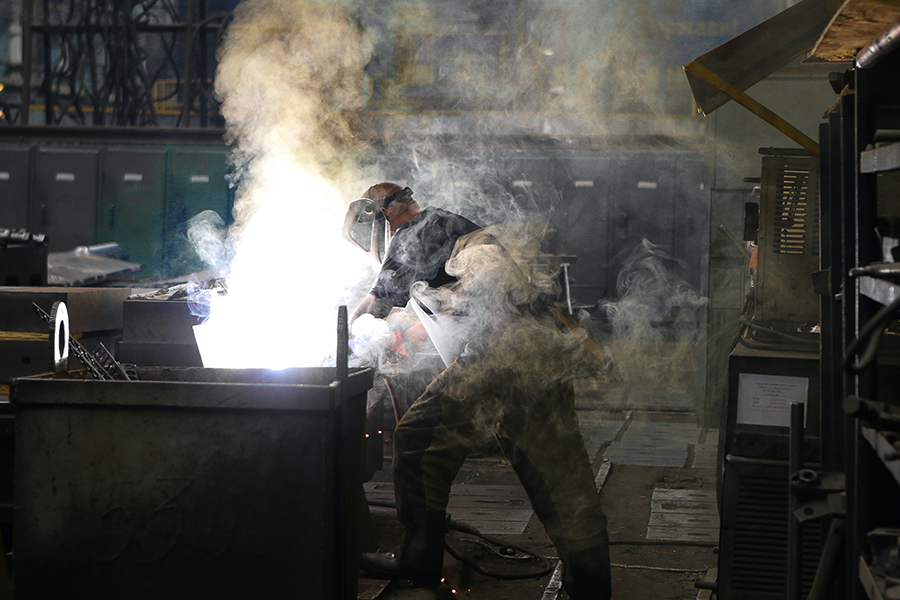Design & Developed by Themeseye

Custom metal fabrication plays a vital role in various industries, including aerospace, automotive, electronics, and telecommunications. For businesses that depend on high-performance components, understanding the step-by-step process behind custom metal fabrication is important.
This knowledge enables informed supplier selection in industrial operations. This blog outlines the key stages involved in custom metal fabrication and the importance of planning at every step.
Stage 1: Design and Engineering
Every fabrication project begins with a clear plan. In the design stage, engineers and designers collaborate to develop technical drawings and CAD files of the product.
Key activities include:
The design lays the foundation for downstream fabrication steps by identifying potential challenges early on. This helps avoid costly revisions in the later stages of custom tool fabrication.
Stage 2. Prototyping and Testing
Before full-scale production begins, many fabrication projects move through a prototyping phase. This allows for the creation and evaluation of physical samples for function, fit, and form.
Benefits of prototyping:
For precision mechanical assemblies or custom metal enclosures, prototyping ensures the final product meets industry requirements and customer expectations.
Also Read:
Why Quality Control Matters in Custom Sheet Metal Fabrication
How Metal Fabrication Shapes Infrastructure Development
Innovative Sheet Metal Fabrication Applications Across Different Industries in Canada
Stage 3: Material Preparation
After approval and prototyping of the design, it is time to prepare the raw materials. This typically involves cutting metal sheets or bars to the correct size using laser cutting, shearing, or sawing equipment.
Common material types include:
Clean and precisely cut materials are crucial for maintaining consistency in the subsequent stages of fabrication.
Stage 4: Forming and Shaping
At this stage, it is time to shape the raw materials into their intended form. Depending on the project, there are different techniques that can help achieve the desired geometry.
Techniques used:
Maintaining tight tolerances during the forming process is essential, especially for high-precision components used in aerospace or electronics applications.
Stage 5: Machining and Finishing
Machining in custom metal fabrication adds intricate details, such as holes, threads, or contours, to formed parts. CNC (Computer Numerical Control) machining offers speed and repeatability, ensuring accuracy down to the smallest measurements.
Machining operations:
Following machining, it is time to apply finishing processes, such as deburring, polishing, or anodizing. This helps enhance surface quality and improve corrosion resistance.
Stage 6: Welding and Assembly
For projects that require multiple components, welding and assembly come next. Skilled technicians join parts through precision welding, often followed by mechanical assembly, where they add hardware, fasteners, or electronics.
Assembly considerations:
Inspection during this stage helps identify issues before final delivery, ensuring that the product performs as intended.
Stage 7: Quality Control and Inspection
Each fabricated part must meet exacting quality standards before shipping. Quality control in metal fabrication services ensures that products meet the client’s specifications and comply with applicable industry certifications.
Common inspection processes:
Products built for regulated industries such as aerospace or defence often require documentation and traceability as part of the inspection process.
Understanding each stage in the custom metal fabrication process highlights the importance of precision, planning, and quality assurance. Each step builds upon the last, and any error along the way can impact the overall performance and reliability of the final product.
Businesses seeking high-quality tools benefit from collaborating with a custom tool manufacturer that can deliver the right results. This is possible when the manufacturer combines advanced technology with decades of industry expertise.
Promark Tool & Manufacturing has been delivering tailored metal fabrication solutions across Canada for decades. For projects that require precision, compliance, and craftsmanship, contact us to understand how precision-driven fabrication can support your various production goals.